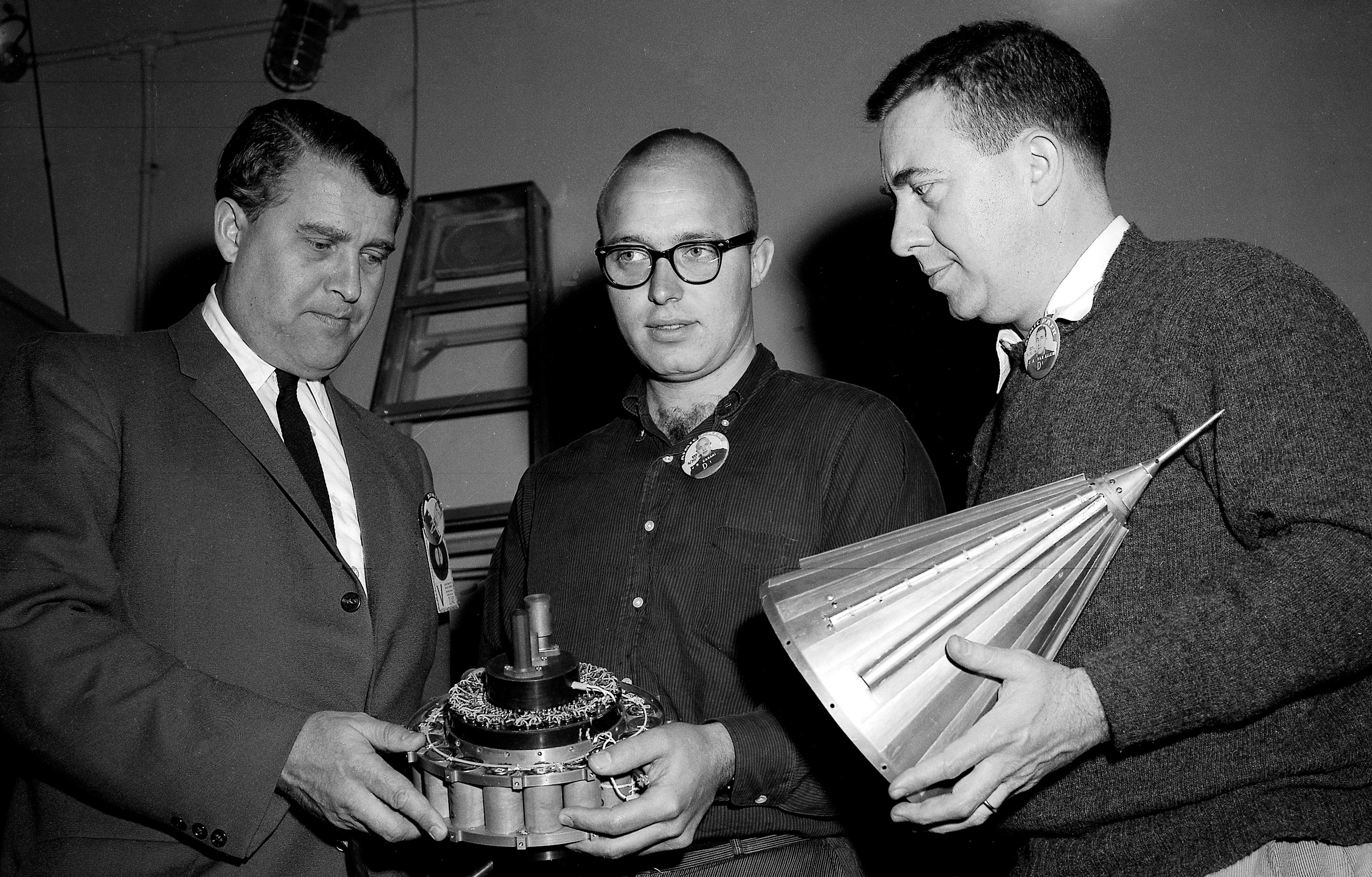Resources
Pioneers and Pioneer IV

Dr. Wernher von Braun, then director of the U.S. Army Ballistic Missile Agency's Development Operations Division at Redstone Arsenal in Huntsville, Ala., left, John Casani of the Jet Propulsion Laboratory, center, and Dr. James Van Allen, professor of Physics and Astronomy at the University of Iowa, inspect components of the Pioneer IV spacecraft on March 1, 1959. The probe contained a radio transmitter, cosmic radiation counter and other instruments.
Original Story
By Bob Granath
NASA's Kennedy Space Center, Fla.
Just two months after its inception, NASA planned two attempts to fly by the moon and return data about cosmic radiation in the Earth and lunar environments. Developed at the Jet Propulsion Laboratory in Pasadena, Calif., the conical-shaped Pioneer 3 and 4 spacecraft were small by today's standards, weighing just 13.2 pounds, and measuring 1.67 feet in length and 9 inches in diameter at the base.
Pioneer 3 lifted off on Dec. 6, 1958, atop an Army Ballistic Missile Agency Juno II rocket from Cape Canaveral Air Force Station's Launch Complex 5. However, depletion of propellant caused the first stage engine to shut down 3.7 seconds prematurely, preventing the spacecraft from reaching the speed necessary to break free of the Earth's gravity.
Although Pioneer 3 did not achieve escape velocity, it reached an altitude of 63 miles and discovered a second radiation belt around Earth. America's first satellite, Explorer 1, was launched Jan. 31, 1958, and made the initial discovery of what became known as the Van Allen Radiation Belts. University of Iowa Physics and Astronomy professor Dr. James Van Allen, for whom the energetic charged particle layers are named, developed the instruments for the satellite.
On the second attempt, on March 3, 1959, Pioneer 4 successfully lifted off from Launch Complex 5 and became the first American spacecraft to escape Earth's gravity.
The Soviet Union's Luna 1 was the first probe to do so on Jan. 2, 1959. It was designed to impact the moon, but due to an incorrectly timed upper-stage burn during launch, Luna 1 missed the moon but became the first spacecraft to enter orbit around the sun.
Pioneer 4 made its closest approach to the moon on the second day of the mission, passing within 37,000 miles of the lunar surface. The payload included two Geiger counters, similar to those developed by Van Allen for Explorer 1, and a camera trigger mechanism as a test for future photographic missions. While the spacecraft did fly past the moon, the camera sensor failed to trigger because its fly-by was at a greater distance than originally planned due to a trajectory error.
Pioneer 4 did provide extensive and valuable data on radiation and the tracking of space objects. Contact was lost from Pioneer 4's tiny radio on March 6, 1959, after 82 hours of transmissions and 655,000 miles of travel. It was the farthest tracking distance for a human-made object at the time.


